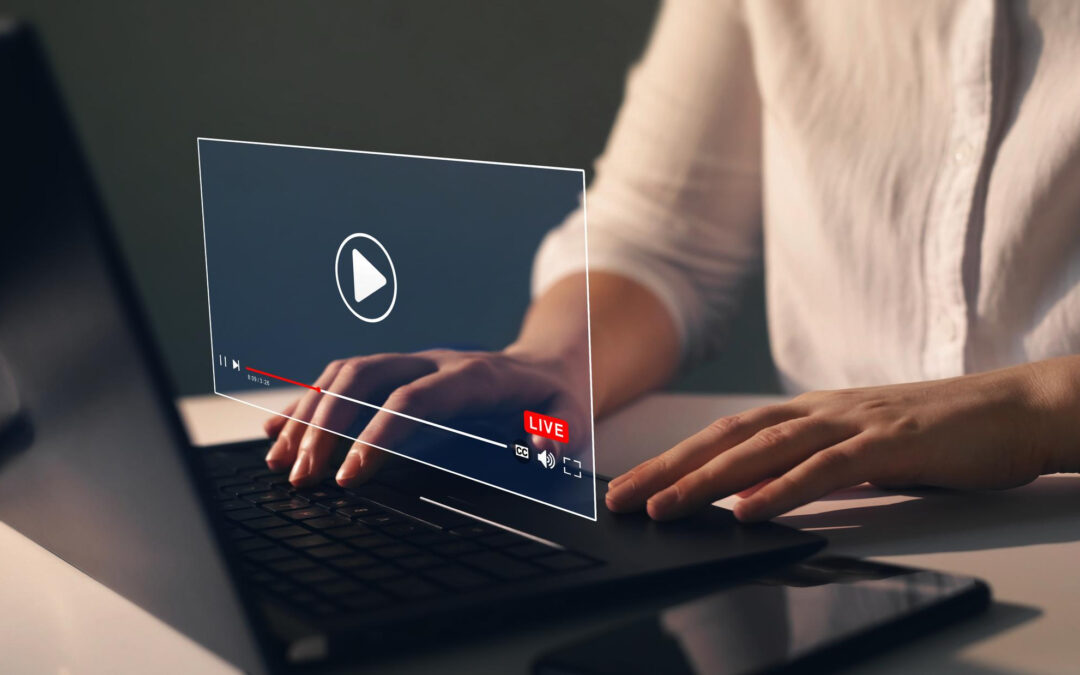Videos have grown in its popularity since it was first developed in 1951 as mechanical television systems which were quickly replaced by cathode-ray tube (CRT) television systems. Not only the technology to display videos has evolved, but the way one recorded it has also seen a drastic innovation. Videos were originally meant to be an exclusively live technology but soon after, Charles Ginsburg and his team of researchers at Ampex developed one of the first practical video tape recorders (VTR). An interesting fact is that the first VTR captured live images from television cameras by writing cameras electrical signal onto magnetic video tape. Seems to be a complicated technology back then, correct? But that was the foundation which led to the popularity of Analog Videos.
Time traveling from that era to the late 1990’s we saw the invention of DVD’s and CD’s to store, distribute and transmit video content. As time passed, with advances in computer technology, now we have smartphones, digital cameras, video cameras, and software solutions available which can record, store, transmit and create video content at a very reasonable cost as compared to traditional legacy analog methods so much that analog video has now been termed as a “Legacy Technology” in most parts of the world. The transition of videos to digital mediums has only enhanced it further with high resolution outputs, improved dynamic range and colour gamut which are pleasing to the human eye.
Today, the world is thriving on videos to communicate information in an engaging and effective way. Right from social media feeds, television, OTT platforms, communication tools like WhatsApp or WeChat, all rely on video content. So, why should Learning and Development (L&D) shy away from videos as a method to deliver training? Surely, they don’t. Videos are one of the most widely used modalities to deliver learning content today. According to a research conducted by Google, 58% people said that they are using digital video to learn a new skill.
Let us see a few benefits of video-based learning:
- Used for short bite sized micro-learning delivery thereby increasing learner engagement and retention
- Leveraged for just-in-time learning or quick help and support guides for learning on the go
- Quick to develop and cost effective as compared to other eLearning modalities
- Increases learner retention with visually stunning graphics, music and voiceover narration
- Can be delivered through different devices like laptops, desktops, tablets and smartphones
- Could be shared through channels like WhatsApp or other messaging applications to increase reach rather than just hosting it on a Learning Management System (LMS)
- Helps faster recall by flattening the forgetting curve
- Aids in structuring content thereby reducing cognitive overload for the learners
- Gives learners the flexibility to consume content from anyplace and at anytime
- Learners can use videos for revision of a particular topic which covers the main points or gives an overview
Apart from the ones mentioned above, there are definitely many more benefits to video-based learning.
Now that we have seen the history and how videos have few good benefits to learning delivery, let us see what are some different types of videos which are used for learning:
- Talking Head Videos: Videos which have a real person talking explaining a particular concept is termed as talking head videos. You can have the content presentation in the background with the actual individual talking on the front. These types of videos are commonly seen on platforms like Udemy or Coursera
- 2D Animated Videos: Animated characters, background scores and illustrations make this one of the go to and popular video formats for L&D teams developing content. It becomes visually fun and engaging for the learners to see such type of content presentations
- 3D Animated Videos: These videos are more rich and graphically engaging teaching a concept in three dimensions. Very well suited for product trainings where you can replicate and show a product and its features in 3D
- Scribe or Whiteboard Animation Videos: One of the cost-effective ways to deliver video content. Visually it may look a little simple but the whole hand gestures drawing the complete story of the content you are presenting just hooks the learners
- 360° Videos: One of the most immersive styles of presenting video content. 360-degree videos give a complete perspective of an object or place thereby getting the learners feel as if they are physically present there
- Photographic Videos or Infographic Style Videos: A quick way to put together a video content and deliver it in mp4 format. Photographic videos use a lot of photographs icons, images and other elements using simple animations. The photographs can be sourced from image stock libraries like Shutterstock, Adobe Stock, Freepik amongst many others
- Motion Graphic Videos: These are proper movie like videos which could be both, animated and real people shot with professional videography
- Interactive Videos: If the video tends to be a little long in duration, learners tend to sit back and there is a loss of learning. In order to ensure that the learners are engaging with the video content, and it is not only a one-way communication, interactive videos put a layer of interactivity on top of any normal video. For example, at a particular point in the video the video will pause and ask learners a question which required their input without which, the video won’t move ahead. This way it is one of the most engaging video formats
Including the above there are many other video formats which PassionPro Learning Solutions has been supporting its customers with over the years using tools like Adobe AfterEffects, Premier, Vyond, Unity 3D, Camtasia, Animaker, PowToon, iClone and the list goes on.
In conclusion, video-based learning is here to stay and in fact one of the most widely used mediums to deliver training. We would love to hear your experience on how you are leveraging videos to train your employees or students and whether you are facing any challenges in doing so. Let us know your thoughts!

